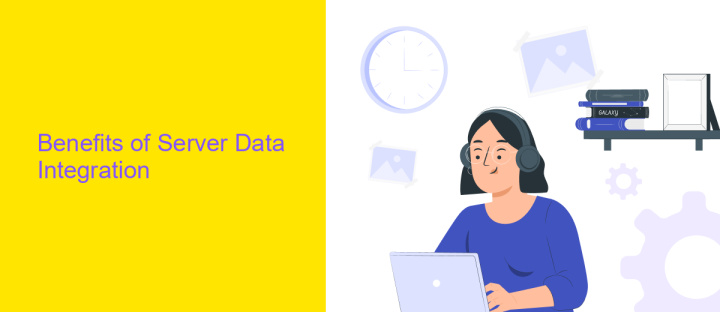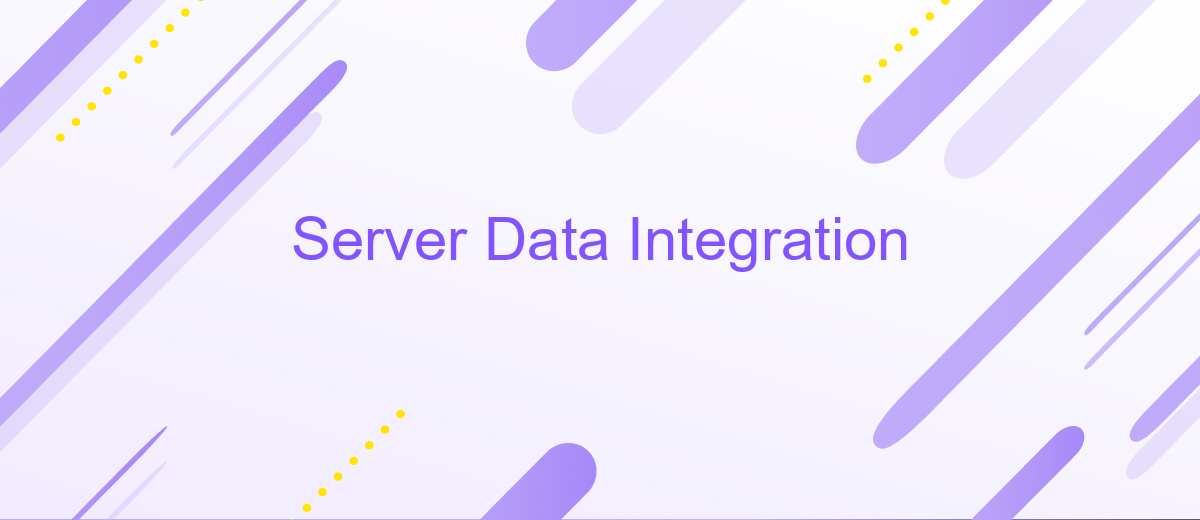Server Data Integration
Server data integration is a critical process for modern enterprises, enabling seamless communication and data sharing across various systems and platforms. By integrating server data, organizations can enhance operational efficiency, ensure data consistency, and support informed decision-making. This article explores the key benefits, challenges, and best practices for effective server data integration, helping businesses unlock the full potential of their data assets.
Introduction
Server data integration is a crucial aspect of modern IT infrastructure, enabling seamless communication and data exchange between diverse systems. As organizations grow, the complexity of their data environments increases, making efficient integration essential for maintaining operational efficiency and data consistency. By implementing robust server data integration solutions, businesses can ensure that their various applications and databases work in harmony, providing a unified view of information.
- Enhanced data accuracy and consistency
- Improved operational efficiency
- Streamlined business processes
- Reduced data redundancy
- Facilitated decision-making
In this article, we will explore the fundamental principles of server data integration, the challenges organizations face, and the best practices for implementing effective integration strategies. Whether you are dealing with on-premises systems, cloud-based solutions, or a hybrid environment, understanding the key concepts of server data integration will empower you to optimize your IT infrastructure and drive business success.
Benefits of Server Data Integration

Server data integration offers numerous benefits, including improved data accuracy and consistency. By centralizing data from various sources, organizations can ensure that all departments are working with the same information, reducing the risk of errors and discrepancies. This unified approach enhances decision-making processes, as stakeholders have access to reliable and up-to-date data, leading to more informed and effective strategies.
Additionally, server data integration streamlines operations and boosts efficiency. Automated data synchronization eliminates the need for manual data entry, saving time and reducing the possibility of human error. Tools like ApiX-Drive facilitate seamless integration between different systems, allowing businesses to connect applications effortlessly and automate workflows. This not only enhances productivity but also enables organizations to respond more quickly to market changes and customer needs, ultimately driving growth and competitiveness.
Challenges of Server Data Integration

Server data integration is a critical aspect of modern IT infrastructure, but it comes with its own set of challenges. These challenges can hinder the seamless flow of data between different systems, affecting overall efficiency and performance.
- Data Inconsistency: Different servers may store data in various formats, leading to inconsistencies when integrating.
- Security Risks: Transferring data between servers can expose sensitive information to potential breaches if not properly secured.
- Scalability Issues: As the volume of data grows, maintaining integration performance becomes increasingly difficult.
- Compatibility Problems: Legacy systems may not be compatible with modern integration tools, complicating the process.
- Latency: Delays in data transfer can occur, affecting real-time data processing and decision-making.
Addressing these challenges requires a comprehensive approach that includes robust security measures, data standardization, and scalable integration solutions. By proactively tackling these issues, organizations can ensure efficient and secure data integration across their server infrastructure.
Best Practices for Server Data Integration

Effective server data integration is crucial for ensuring seamless data flow and consistency across systems. To achieve this, it is essential to follow certain best practices that optimize performance and reliability. First, clearly define your integration requirements and objectives to guide the entire process.
Next, choose the right tools and technologies that align with your specific needs. Utilize middleware solutions and APIs to facilitate smooth data exchange. Ensure that your system architecture is scalable to accommodate future growth and changes.
- Implement robust data validation and error-handling mechanisms.
- Ensure data security and compliance with relevant regulations.
- Regularly monitor and optimize performance to prevent bottlenecks.
- Maintain comprehensive documentation for all integration processes.
Lastly, foster collaboration between IT and business teams to ensure that integration efforts align with organizational goals. Continuous evaluation and improvement of integration processes will help maintain data integrity and support evolving business needs.
- Automate the work of an online store or landing
- Empower through integration
- Don't spend money on programmers and integrators
- Save time by automating routine tasks
Conclusion
In conclusion, effective server data integration is crucial for optimizing business operations and ensuring seamless communication between various systems. By implementing robust integration strategies, organizations can enhance data accuracy, improve decision-making processes, and streamline workflows. The use of advanced tools and services, such as ApiX-Drive, can significantly simplify the integration process, allowing businesses to connect different applications and automate data transfers with ease.
Moreover, adopting a comprehensive approach to server data integration can lead to substantial cost savings and increased operational efficiency. As technology continues to evolve, it is essential for organizations to stay updated with the latest integration solutions and best practices. By leveraging platforms like ApiX-Drive, companies can achieve a high level of flexibility and scalability, ensuring their systems remain interconnected and responsive to changing business needs.
FAQ
What is Server Data Integration?
Why is Server Data Integration important?
What are the common challenges in Server Data Integration?
How can I automate Server Data Integration processes?
What should I consider when choosing a Server Data Integration tool?
Time is the most valuable resource in today's business realities. By eliminating the routine from work processes, you will get more opportunities to implement the most daring plans and ideas. Choose – you can continue to waste time, money and nerves on inefficient solutions, or you can use ApiX-Drive, automating work processes and achieving results with minimal investment of money, effort and human resources.


